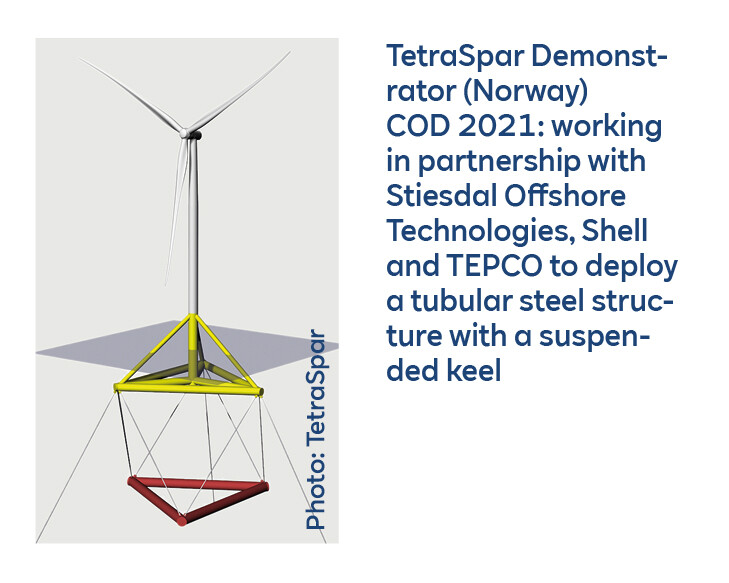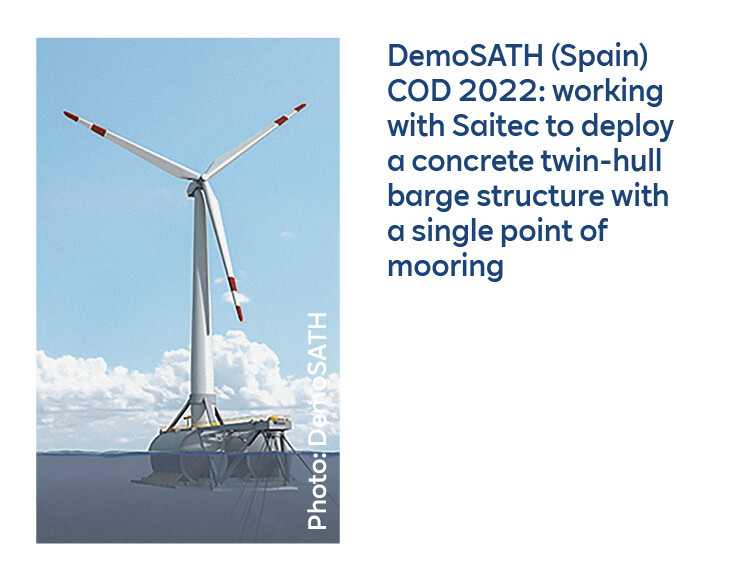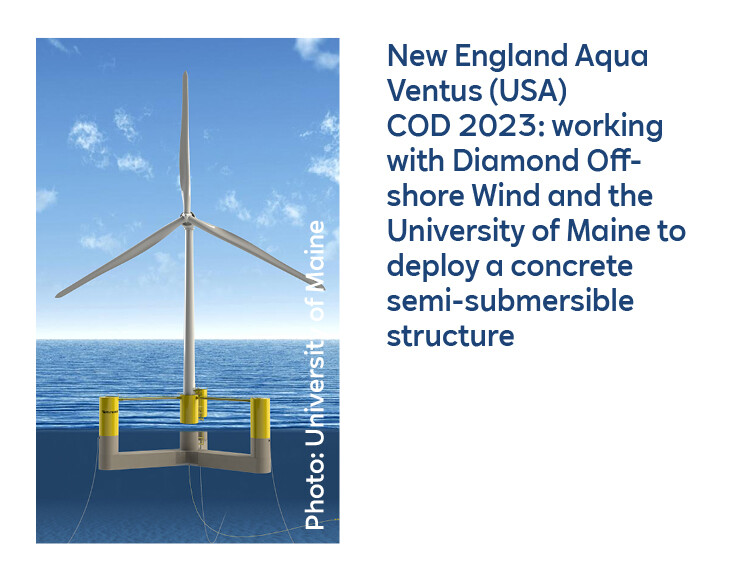Associate Feature: Why is floating wind good for Scotland?
RWE’s extensive experience in deploying offshore wind has given us an excellent understanding of what is needed to facilitate new technologies, alongside opportunities to invest in people and communities. But what really excites us are the opportunities that new floating wind technology presents for Scotland.
Our ambition is to safely develop, build and operate cost-competitive, commercial-scale projects around the world. To achieve this we are implementing a world-class capability development programme, including extensive supply chain engagement, participation in leading joint industry projects and investment in three high-profile demonstration projects.
Through our involvement in the three floating demonstration projects, we are already building a strong knowledge base which can be the stepping stone to delivering future floating wind projects off the Scottish coast.
Scotland is surrounded by deep waters and will play a key role in helping the UK meet its renewable energy targets. Floating technology is necessary to deploy offshore wind in these deeper waters. The ScotWind seabed leasing process allows developers to make a start in delivering commercial scale floating wind, providing the perfect vehicle for the development of this technology.
While floating wind uses the same turbines as conventional ‘seabed-fixed’ offshore wind they are deployed on top of floating structures that are secured to the seabed with mooring lines and anchors. Electricity is transmitted via subsea cables.
RWE’s floating wind demonstrator portfolio
The demonstrator projects are providing unique insights into the particular challenges and opportunities of different structure types, materials, mooring systems and installation methodologies. Lessons learnt will enable us to reduce the cost and risk of our future commercialscale projects.
Identifying the materials required to construct commercial-scale floating projects has led us to investigate specific opportunities for the Scottish supply chain, including through our collaborative research into foundations for floating wind installations.
Manufacture of concrete foundations could have the biggest supply chain benefit in terms of Scottish content for floating wind projects. In recent years, the Scottish engineering supply chain has been an industry leader, delivering oil and gas structures for the North Sea, as well as exporting technical expertise to markets around the world.
Production of floating wind concrete foundations has the potential to build on this legacy. For example, one concrete foundation for a 15MW floating turbine would have a mass in excess of 10,000 tonnes, and with a 500MW project needing more than 30 of them, offering an important opportunity for the local supply chain.
To that end we are working with Offshore Renewable Energy (ORE) Catapult’s Floating Offshore Wind Centre of Excellence to understand the scale of this potential and how it might be unlocked.
Scotland is possibly unique in being an established offshore wind market that is also offering sites with depths suitable for deployment of floating wind. The ScotWind seabed leasing process could establish Scotland as a global leader in floating wind and presents a real opportunity for the Scottish supply chain, both domestically and in export markets.
The prospects of a greater proportion of UK offshore wind projects being facilitated in Scottish Waters provides opportunity for Scotland to get its fair share of the 60 per cent UK local content ambitions, as set out in the Offshore Wind Sector Deal.

TetraSpar Demonstrator (Norway) COD 2021: working in partnership with Stiesdal Offshore Technologies, Shell and TEPCO to deploy a tubular steel structure with a suspended keel.

DemoSATH (Spain) COD 2022: working with Saitec to deploy a concrete twin-hull barge structure with a single point of mooring.

New England Aqua Ventus (USA) COD 2024: working with Diamond Offshore Wind and the University of Maine to deploy a concrete semisubmersible structure.
Pioneering wind power in Scotland is in RWE’s blood
Scotland has always been a natural partner for RWE. The country’s remarkable physical landscape and geographical advantages, alongside dedicated government support for renewables over many years, has enabled us to build strong partnerships. Through these we have delivered clean energy projects in partnership with local communities and Scottish companies, all in pursuit of Scotland’s climate goals.
As a world leader in renewable energy deployment, dedicated to achieving net zero carbon emissions by 2040, RWE is driving the energy transition and investing more than 90 percent of its capital in renewables and storage technologies.
Trailblazing renewables in Scotland RWE has always been a trailblazer of wind power, with Scotland at the forefront of our activity. We developed our first onshore wind farm, Novar, in Ross-shire, as far back as 1997. Today we operate 10 onshore wind farms across Scotland, with 14 more in development, many in partnership with organisations such as Forestry Land Scotland.
We are proud to have constructed and now operate Scotland’s first commercial-scale offshore wind farm Robin Rigg in the Solway Firth, operational since 2010. More widely our 55 megawatts (MW) Markinch Biomass Combined Heat & Power Plant in Fife provides heat to the innovative and award winning Glenrothes District Heat Network and our 16 small scale hydropower plants generate electricity quietly and unobtrusively on rural rivers in the Highlands.
We are committed to the communities around our renewable energy projects and have already provided over £15 million to Scottish communities since 2007, through funds which are designed to meet the needs of the local area, with spending priorities often decided by local residents.
We are also committed to offering community shared ownership at many of the projects in our development pipeline. Our 25-year ambition for Scotland RWE has been a strong partner for Scotland over nearly 30 years, and I can only see that relationship gaining strength over the coming decades.
There is a real opportunity for the Scottish Government, through the ScotWind process, to realise its ambitions for the country’s future clean energy prospects and the economic benefits this will bring.
Through our track record of delivering renewables projects across Scotland, our commitment to supporting communities and local supply chains, alongside our global expertise and experience in offshore wind, RWE hopes to continue its role as a key partner for Scotland in realising its clean energy future.
Tom Glover is RWE UK country chair
This article was sponsored by RWE
Holyrood Newsletters
Holyrood provides comprehensive coverage of Scottish politics, offering award-winning reporting and analysis: Subscribe